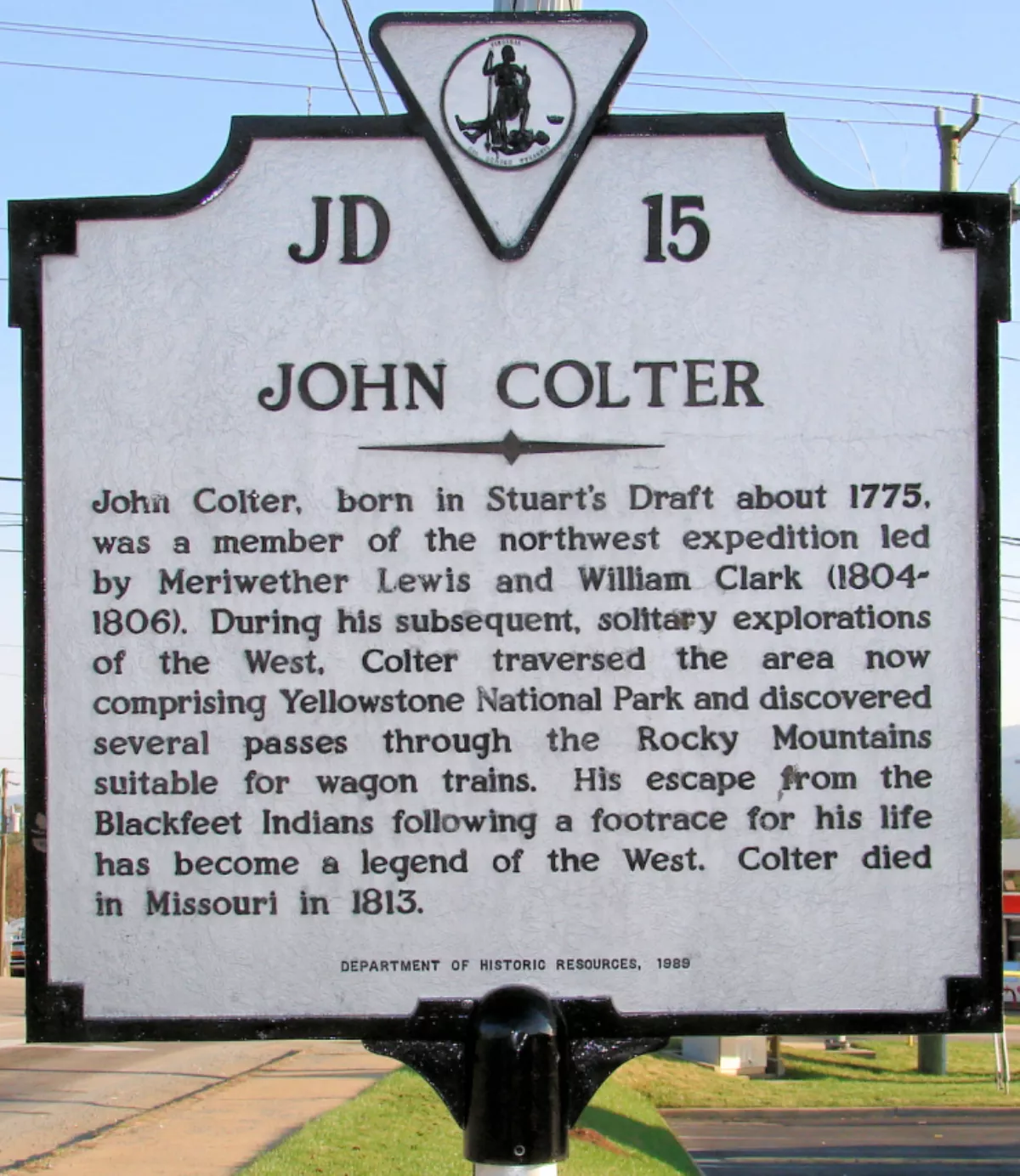 1.
1. John Colter spent months alone in the wilderness and is widely considered to be the first known mountain man.

 1.
1. John Colter spent months alone in the wilderness and is widely considered to be the first known mountain man.
John Colter was born in Stuarts Draft, Colony of Virginia in 1774, based on assumptions by his family.
John Colter was considered to be one of the best hunters in the group and was routinely sent out alone to scout the surrounding countryside for game meat.
John Colter was often trusted with responsibilities that went beyond hunting and woodsman activities.
John Colter was instrumental in helping the expedition find passes through the Rocky Mountains.
In one instance, John Colter was handpicked by Clark to deliver a message to Lewis, waylaid at a Shoshone camp, concerning the impracticability of following a route along the Salmon River.
John Colter never appeared on sick lists, suggesting very advantageous health.
John Colter was often one of the few hunters allowed to leave the camp during points of illness and recuperation, showing Lewis and Clark's confidence in him.
Once at the mouth of the Columbia River, John Colter was among a small group selected to venture to the shores of the Pacific Ocean, as well as explore the seacoast north of the Columbia into present-day Washington state.
In 1807, John Colter's settlement was retracted after Congress passed a mandate supplying all members of the Corps of Discovery with doubled wages and land grants of 320 acres.
John Colter headed back toward civilization in 1807 and was near the mouth of the Platte River when he encountered Manuel Lisa, a founder of the Missouri Fur Trading Company, who was leading a party that included several former members of the Lewis and Clark Expedition, towards the Rocky Mountains.
John Colter decided to return to the wilderness, even though he was only a week from reaching St Louis.
At the confluence of the Yellowstone and Bighorn Rivers, John Colter helped build Fort Raymond and was later sent by Lisa to search out the Crow Indian tribe to investigate the opportunities of establishing trade with them.
John Colter left Fort Raymond in October 1807 and traveled over 500 miles to establish trade with the Crow nation.
John Colter probably passed along portions of the shores of Jackson Lake after crossing the Continental Divide near Togwotee Pass or more likely, Union Pass in the northern Wind River Range.
John Colter then explored Jackson Hole below the Teton Range, later crossing Teton Pass into Pierre's Hole, known today as the Teton Basin in the state of Idaho.
John Colter then proceeded back to Fort Raymond, arriving in March or April 1808.
John Colter arrived back at Fort Raymond, and few believed his reports of geysers, bubbling mudpots and steaming pools of water.
John Colter's Route was included in a version of Clark's map, titled "A Map of Lewis and Clark's Track Across the Western Portion of North America from the Mississippi to the Pacific Ocean," which was published in 1814.
The inaccuracies that plague the 1814 map's details of the area between Manuel's Fort on the Yellowstone and the likely location of John Colter's Hell have fueled much of the scholarly disagreements surrounding John Colter's Route.
The Flatheads and Crows managed to force the Blackfeet into retreat, but John Colter suffered a leg wound from either a bullet or arrow.
John Colter instantly snatched up the pointed part, with which he pinned him to the earth, and then continued his flight.
John Colter took a blanket from the Indian he had killed.
In 1810, John Colter assisted in the construction of another fort located at Three Forks, Montana.
John Colter had been away from civilization for almost six years.
Sources are unclear about when John Colter died or the cause of death.
One report states that after suddenly turning ill, John Colter died of jaundice on May 7,1812, and was buried near Miller's Landing.
John Colter's legacy has had a profound impact on the image of the American West and frontier, with John Colter's Run seeing many incarnations and recreations, including a retelling by Washington Irving.